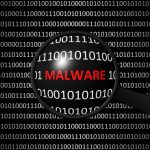New malware targets AWS Lambda cloud environment

The latest research from Cado Security reveals the first publicly known malware that is specifically designed to execute in the AWS Lambda serverless environment.
Named Denonia, the malware downloads and runs crypto mining software, and demonstrates how attackers are exploiting newer cloud computing use cases to take advantage of their ephemeral nature to evade detection.
94 percent of critical assets can be compromised within four steps of a breach

A new study from Israel-based XM Cyber, based on findings from nearly two million endpoints, files, folders and cloud resources throughout 2021, shows 94 percent of critical assets can be compromised within just four steps of the initial breach point.
The research team analyzed the methods, attack paths and impacts of attack techniques that imperil critical assets across on-premise, multi-cloud and hybrid environments, and developed tips for thwarting them.
New endpoint solution reduces risk and streamlines patching

A new multi-vector endpoint detection and response (EDR) solution from Qualys aims to reduce the risk of compromise with vulnerability management and patching all from a single agent.
Traditional EDR solutions still focus solely on endpoint activity to detect attacks and incorporate only MITRE ATT&CK techniques -- not tactics. This means security teams are forced to rely on additional tools to strengthen their risk management.
The challenges of vulnerability management [Q&A]

Recent vulnerabilities like Log4j have highlighted how difficult it can be to manage risks and ensure that software patches are kept up to date.
We spoke to Rob Gurzeev, CEO of attack surface management specialist CyCognito, to discuss the challenges involved and how to deal with them.
Three myths about cloud costs debunked

With the increased investment in remote workforces since the start of the pandemic and subsequent acceleration in cloud adoption and digital transformation, cost reduction initiatives have grown in importance as a critical consideration for technology leaders and C-Suite.
According to research from Deloitte, two of three (66 percent) organizations globally are currently pursuing cost reduction strategies and, overall, cost reduction initiatives have dramatically increased -- by 74 percent -- since pre-COVID. Within this, a common assumption is that migration to the cloud instantly translates to cost savings for a business. But without the right evaluation process in place, the true costs of cloud computing can add up fast.
Why ransomware attacks steer clear of the cloud

Ransomware made news headlines worldwide earlier this month after a successful attack against one of Toyota Motor Corp.’s parts suppliers forced the automaker to shut down 14 factories in Japan for a day, halting their combined output of around 13,000 vehicles.
That attack was the latest example of the threat ransomware poses to all industries. The most recent edition of SonicWall’s annual threat report states that the volume of ransomware attacks in 2021 has risen 231.7 percent since 2019. And an advisory jointly issued by the Cybersecurity and Infrastructure Security Agency (CISA), the FBI, and the NSA reveals the latest trend is ransomware as a service -- gangs of bad actors essentially "franchising" their ransomware tools and techniques to less organized or less skilled hackers.
Cloud application delivery: Still a work in progress for many

It’s hard to overstate the key role of application reliability and performance for today’s organizations. To compete effectively and grow in modern digital markets, businesses must meet high customer expectations for a great experience. Hybrid workplace strategies and work-from-home policies make it all the more critical to deliver a consistent high-quality experience wherever people work. Rising cyberthreats and an expanding attack surface call for a heightened focus on security. And agility is a must to support innovation and keep pace with fast-moving markets.
To address these needs, organizations increasingly host their applications in hybrid cloud and multi-cloud environments. In a recent survey, A10 Networks and Gatepoint Research asked senior technology decision-makers about their experiences delivering applications in the cloud, and what today’s organizations need to achieve the digital resiliency on which their businesses depend.
Managing identities between clouds is the top challenge for businesses

More than three-quarters (78 percent) of respondents to a new survey say managing user identities between multiple clouds is their number one challenge.
The study carried out by Forrester for Strata Identity finds 70 percent want to migrate to the cloud increase security and protect data. But at the same time 28 percent of companies are using four or more public/private clouds today and that's expected to more than double in two years to 65 percent.
Most enterprise network assets are cloud-based but policies aren't keeping pace

Nearly 90 percent of device assets in the modern organization are cloud-based, meaning physical devices such as laptops, tablets, smartphones, routers, and IoT hardware represent less than 10 percent of total devices.
However, the latest State of Cyber Assets report from JupiterOne analyzed nearly 10 million security policies and finds that cloud-specific ones represent less than 30 percent of the total.
F-Secure creates new corporate security brand

Cybersecurity company F-Secure is rebranding its corporate security business under the new name WithSecure and with a snazzy new logo, above.
Previously known as F-Secure Business, WithSecure will focus on corporate security products and solutions, while consumer security products and services remain available under the existing F-Secure name.
88 percent of enterprises plan to boost IT automation investment

New research from service orchestration and automation solutions company Stonebranch finds 88 percent of enterprises intend to grow their investment in these technologies this year.
The report is based on a survey of respondents from companies with over 1000 employees to find their views about automation and orchestration as it relates to cloud, data pipelines, IT operations, self-service enablement, and more.
Five steps for controlling cloud costs

With cloud costs accounting for nearly a third of IT budgets in 2021 and predicted to dramatically increase in the coming years as more companies undergo cloud migration efforts, the need for organizations to get the highest possible value out of their cloud spend is fairly obvious. Actually doing so, however, is an increasingly challenging endeavor due to the complex nature of public cloud environments, as well as the increasing reliance on containers and microservices.
When it comes down to it, the cloud promises speed, but it doesn’t necessarily guarantee that speed at a lower cost than traditional data centers. Maximizing the efficiency of your cloud spend requires buy-in from the entire organization, from the company leadership that makes buying decisions, to the finance teams that track and monitor that spend, all the way down to the developers, engineers and architects responsible for building and implementing those solutions. While there are those who believe that this is just not possible in the world of the public cloud, more modern and diligent approaches have proved that it most certainly is.
Cloud security tool sprawl leads to missed issues, false positives, burnout and more

A new survey of more than 800 IT professionals finds that 55 percent of respondents are using three or more cloud providers and 57 percent have five or more cloud security tools.
But the study from Orca Security shows this combination of multi-cloud adoption and disparate tooling is overwhelming security teams with inaccurate alerts. For example, 59 percent of respondents receive more than 500 public cloud security alerts a day, and 38 percent receive more than 1,000 a day.
How data storage demands will drive edge computing growth [Q&A]

Enterprises are producing larger and larger amounts of data and as they deploy more IoT, edge and 5G devices the volume is only likely to increase.
This puts more pressure on storage capacity which has the potential to be an inhibiting factor in digital transformation. We spoke to Dr Tong Zhang, co-founder and chief scientist at ScaleFlux, to learn more about the importance of storage to enterprise IT plans and infrastructure.
Microsoft for Startups Founders Hub includes free Azure credits and is now available to everyone, regardless of funding

Microsoft is increasing the support it offers to startups by reducing the eligibility criteria for the Microsoft for Startups Founders Hub as the platform is made generally available. With the move, the company is looking to eliminate the boundaries that stand in the way of getting ideas off the ground.
Now billed as being "open to anyone with an idea", the Founders Hub is a startup ecosystem can be used by innovators regardless of whether they have funding or not. The platform gives users access to up to $150,000 in free Azure credits, free access to GitHub and Microsoft 365 as well as potential for mentorship and guidance from experts. There is also $1,000 of credit and more available with OpenAI.
Recent Headlines
BetaNews, your source for breaking tech news, reviews, and in-depth reporting since 1998.
© 1998-2025 BetaNews, Inc. All Rights Reserved. About Us - Privacy Policy - Cookie Policy - Sitemap.